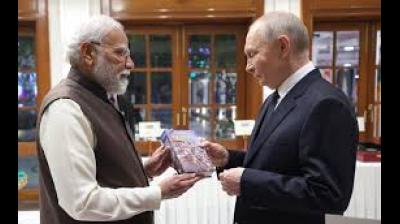
During a recent review meeting, PM Narendra Modi outlined India's future in space exploration
NEW-DELHI: Prime Minister Narendra Modi charted an ambitious trajectory for India's space endeavors, emphasizing the need to strive for significant milestones. During a review meeting centered on the Gaganyaan mission and the Astronaut Rescue System Test Vehicle's inaugural demonstration flight on October 21, Prime Minister Modi set forth key directives for the Indian space program.
One of the prime objectives put forth by the Prime Minister was the establishment of an Indian space station by the year 2035. Building on the recent successes of Indian space initiatives, including Chandrayaan-3 and Aditya L1 missions, PM Modi highlighted the necessity to venture into interplanetary missions. These encompass missions like the Venus Orbiter Mission and the Mars Lander, representing an ambitious vision for India's role in space exploration.
The Prime Minister also articulated a bold target to propel the first Indian to the moon by 2040. To achieve this aspiration, the space department will draft a comprehensive blueprint, incorporating a series of Chandrayaan missions, development of the Next Generation Launch Vehicle (NGLV), construction of a new launch pad, and the establishment of human-centric laboratories, along with relevant technological advancements.
During the meeting, the space department provided an overview of the Gaganyaan mission, highlighting the significant strides made in technology, particularly the 'human rated launch vehicle' and system efficiency. The mission is slated for launch in 2025, with approximately 20 major experiments planned, including three unmanned missions of the 'Human Rated Launch Vehicle' (HLVM-3).
Expressing his unwavering confidence in India's capabilities, PM Modi reiterated the country's dedication to scale new heights in space exploration, propelling India into a prominent position on the global space stage.













